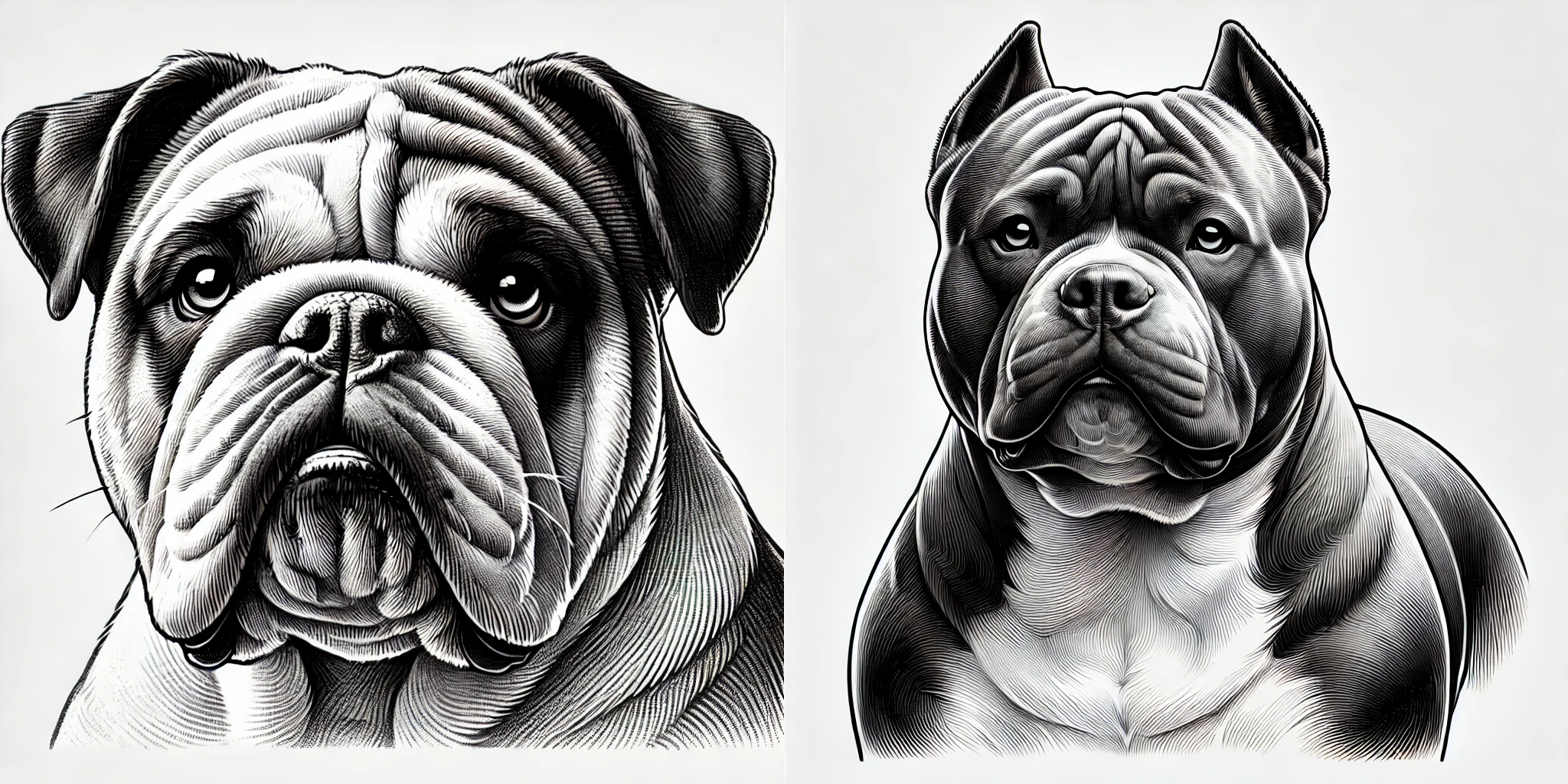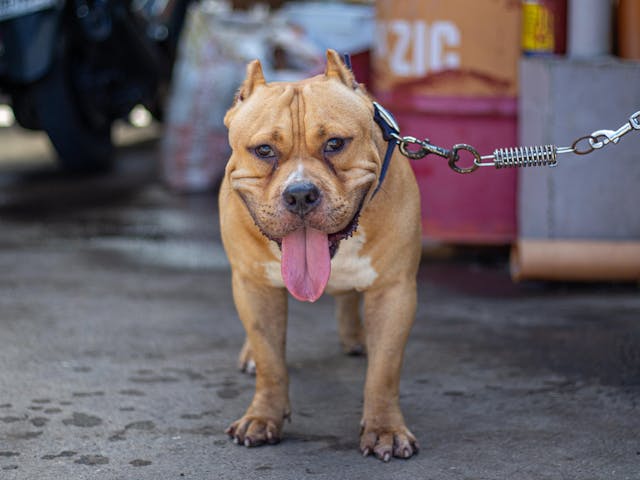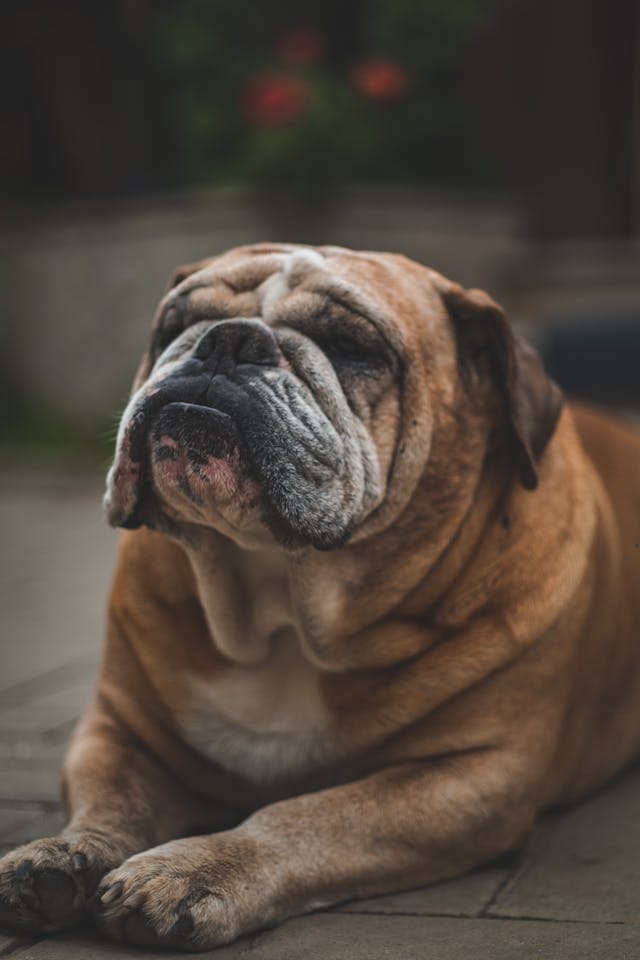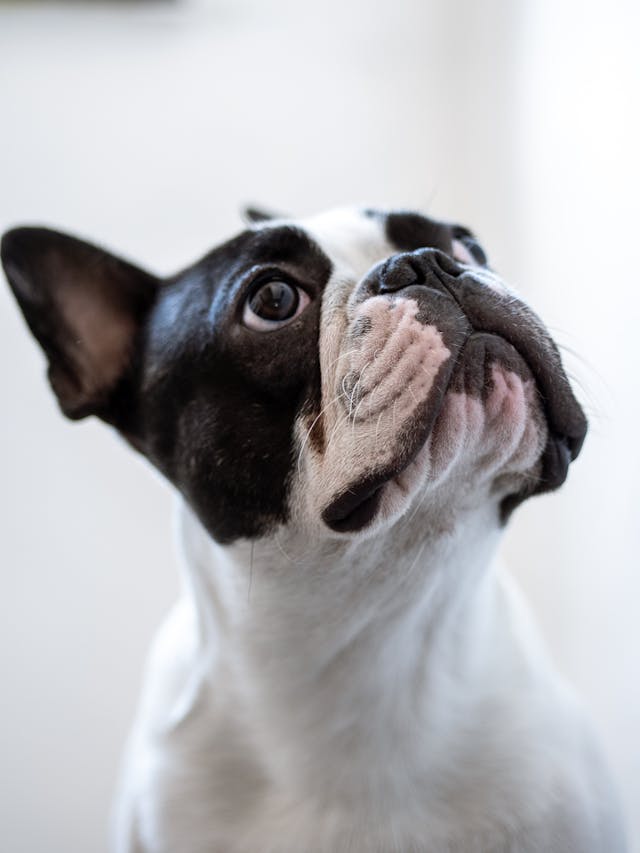No, an American Bully is not a bulldog
What Are The Differences?
When comparing the American Bully and the American Bulldog, it’s easy to see why people might confuse the two breeds. Both share a muscular appearance, and their names sound almost identical, but their differences run deeper than just looks. The American Bulldog, a working dog with a square-shaped head, is built for strength and stamina. This breed originated in the United Kingdom in the 1800s and reflects its purpose-driven background through its prey drive and protective nature, often guarding territory with intense loyalty.
On the other hand, the American Bully, developed in the United States during the 1990s, is a more compact and friendly breed. Bred for companionship, it has a wider head and a personality that’s more sociable with strangers.
Table of Contents

Though the two breeds share some similarities, they differ significantly in size, temperament, and purpose. The American Bulldog is larger and more muscular, while the American Bully is smaller and compact, reflecting its role as a companion dog. The American Bully results from a mix of breeds, including the Pit Bull Terrier and Staffordshire Terrier, giving it a unique combination of traits. In contrast, the American Bulldog descends from the English Bulldog, adding a layer of history to its lineage.
Understanding these breeds involves more than just recognizing their physical characteristics; it’s about appreciating their distinct personalities, origins, and how their roles have shaped their development.
Similarities Between the American Bulldog and American Bully
| Characteristic | American Bulldog | American Bully | Similarities |
|---|---|---|---|
| Loyalty & Devotion | Highly loyal and devoted to their families. | Equally loyal and devoted to their families. | Both breeds are excellent family companions. |
| Trainability | Intelligent but requires firm leadership. | Intelligent and responds well to training. | Both are trainable with early socialization and consistent guidance. |
| Exercise Needs | Needs regular physical activity to thrive. | Requires regular exercise for well-being. | Both thrive in active homes with opportunities for physical and mental activity. |
| Socialization | Benefits from early and consistent training. | Requires early socialization and training. | Both become well-rounded, happy dogs with proper socialization and care. |
| Mental Well-Being | Requires stimulation for mental health. | Enjoys mental challenges and stimulation. | Both need activities to maintain mental well-being and prevent boredom. |

The History and Origins
American Bulldog Origins:
- Traces its roots back to the 1800s as a farm-working dog.
- Brought to America by immigrants, initially known as the White English Southern Bulldog.
- Used for herding livestock, guarding property, and catching feral pigs in the Southern states.
- Renowned for their strength, agility, and loyalty, making them indispensable in agricultural work.
- Selective breeding over time solidified their role as versatile working dogs.
American Bully History:
- Emerged in the 1990s as a companion dog.
- Developed from the American Pit Bull Terrier, Staffordshire Bull Terrier, and other bulldog breeds.
- Focused on creating a dog with a muscular build and a more amiable and laid-back temperament.
- Specifically bred to be a family pet, emphasizing a sociable and good-natured nature.
- Originated in Virginia and Los Angeles (CA) and spread across the US, Europe, and Asia.
Appearance
When comparing the American Bully and the American Bulldog, their appearance stands out as the most striking difference. American Bullies possess a compact body with a wide stance. Their large heads are square-shaped, featuring short muzzles, defined jaws, and noticeable cheek muscles. The breed’s skin folds, especially around the face and neck, give them a unique and distinctive look. Their coat comes in a variety of patterns, including tri-colored and PieBald.
On the other hand, American Bulldogs are more athletic, with a sturdy build, broad chest, and powerful hindquarters. Their coat features solid shades or patches, and despite their size, they are surprisingly low-maintenance. While both breeds share some traits, such as moderate shedding, the Bully’s compact frame contrasts sharply with the Bulldog’s athletic build, emphasizing their individual appeal.
Comparison Table
| Feature | American Bully | American Bulldog |
|---|---|---|
| Height | 13-21 inches | 20-25 inches |
| Weight | 70-120 lbs | 60-100 lbs (females), 75-125 lbs (males) |
| Build | Compact, muscular, wide stance | Athletic, sturdy, broad chest |
| Head Shape | Square-shaped, large | Square-shaped, strong |
| Coat Type | Short, glossy | Short, dense, smooth |
| Coat Colors | Black, white, grey, brown, blue, tan, fawn, red, brindle, tri-colored, PieBald | White, brindle, fawn, red, black, patches |
| Distinctive Traits | Skin folds, cheek muscles, defined jaw | Powerful hindquarters, solid color variations |

Temperament and Personality
American Bulldogs are protective, loyal, and have a strong instinct to guard their territory. They thrive with firm leadership and a home that provides structure and clear boundaries. These dogs are intelligent, highly trainable, and require consistent training and early socialization to become well-rounded family pets.
American Bulldogs are more energetic and need plenty of exercise, while American Bullies adapt well to apartment living if they get enough activity. Bulldogs excel as guard dogs, while Bullies are better suited as therapy dogs due to their outgoing and approachable personalities.
American Bullies are good-natured, affectionate, and eager to please, making them excellent family pets. Their sociable and gentle nature makes them great with children, and they respond well to positive reinforcement. Unlike Bulldogs, they are less aggressive towards strangers and thrive on social interaction and attention.
Both breeds are friendly, loyal, and form strong bonds with their families, but their unique temperament and personality traits influence how they interact with people and other animals.
Trainability
Both American Bulldogs and American Bullies need early obedience training and socialization to ensure good behavior. Introducing them to different people, dogs, and situations helps prevent aggression and builds their confidence, which comes with many bonuses like having a well-adjusted and friendly pet.
Consistency, patience, and positive reinforcement, such as treats and praise, are essential for training. While American Bulldogs require a focus on obedience commands and leash manners, American Bullies are eager to please and excel at learning basic commands and tricks.
Exercise needs differ between the breeds. American Bulldogs are highly energetic and need 1-2 hours of physical activity daily, including walks, runs, or playtime in a fenced yard. American Bullies require 30-60 minutes of daily activity, such as short walks or interactive games like fetch, tug-of-war, or puzzle toys.
Monitoring for Brachycephaly symptoms and ensuring they don’t become overheated during exercise is critical, especially for Bulldogs. A mix of mental and physical stimulation supports their well-being in an active household.

Health Issues
- Both American Bully and American Bulldog are prone to hip dysplasia, causing joint pain and limping.
- Skin allergies are common in both breeds, leading to excessive scratching or licking.
- The American Bully often faces brachycephalic airway syndrome (BOAS), which affects breathing and can be fatal.
- Heart disease is a concern for Bullies, with symptoms like coughing and fatigue.
- American Bulldogs are at risk of obesity, parasites such as worms and mites, and dental issues.
- Keeping skin folds clean, feeding the right food, and ensuring regular exercise are vital for their overall health.
- Vet visits, weight management, and understanding a dog’s genes and parents’ health are crucial for early detection of problems.
Life Expectancy
- American Bulldogs typically live 10–16 years, outliving Bullies in most cases.
- American Bullies have a shorter lifespan of 8–12 years, though with excellent care, some can live up to 15 years.
Grooming and Maintenance
- Both American Bully and American Bulldog have short coats that require regular grooming.
- Weekly brushing with a soft-bristled brush or rubber grooming mitt helps remove loose hair and distribute skin oils.
- The American Bully has a smooth coat that’s easy to maintain, while the American Bulldog may need more frequent brushing due to a slightly longer coat.
- Bathe them every 4-8 weeks or when dirty, using a gentle shampoo to prevent skin irritation.
- Regularly trim nails, clean ears weekly to avoid infections, and brush teeth 2-3 times a week for good oral health.
- Both breeds shed moderately year-round, so regular brushing helps manage shedding.
- Check their skin for rashes, bumps, or redness, and wipe skin folds daily with a damp cloth to prevent irritation.
- A balanced diet with omega fatty acids supports skin and coat health, and supplements can be added if recommended by your vet.
- Watch for excessive scratching or licking, which may signal allergies or other problems requiring prompt care.
- Consistent grooming can prevent minor issues from becoming serious.
Which is the Best Choice for You?
The American Bully is a large breed with a heavy build, while the American Bulldog is medium-sized and lighter. Both breeds have short coats, but the Bully’s is dense, and the Bulldog’s is stiff. The Bully is highly friendly, perfect for children and other animals, while the Bulldog is more reserved.
In terms of activity level, the Bully needs daily exercise, making it ideal for active owners. The Bulldog, being less active, is content with a moderate amount of exercise. Their differences in size, weight, temperament, and energy make them unique, so choose the breed that fits your lifestyle best.
Cost of Ownership
Owning an American Bully or American Bulldog can be expensive, especially if you choose to purchase from breeders rather than adopt. The costs depend on several factors, including the breeder’s location, the dog’s lineage, and whether it’s a show dog. On average, an American Bully can cost between $2,000 and $10,000 or more, while an American Bulldog typically costs $1,500–$3,500. These prices can vary widely based on the dog’s background and breeding quality.
Adopting a dog is often a more affordable option and allows you to give a home to a pet in need. While adoption fees are significantly lower, they still cover essential expenses like vaccinations and spaying or neutering. For those committed to the breed, adoption can be a rewarding way to reduce the overall cost of ownership while still enjoying the companionship of an American Bully or American Bulldog.
The Lifespan of an American Bully: What Every Owner Must Know
What Makes an American Bully? The Mix Revealed!
Is an American Bully a Pitbull? The Unknown Fact!
What is a American bully? Facts, Pics, Care and More..

